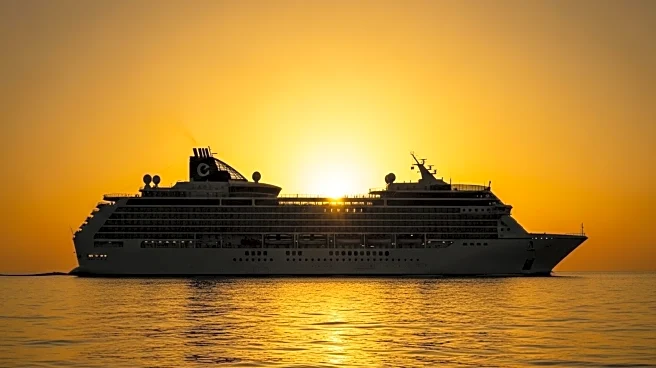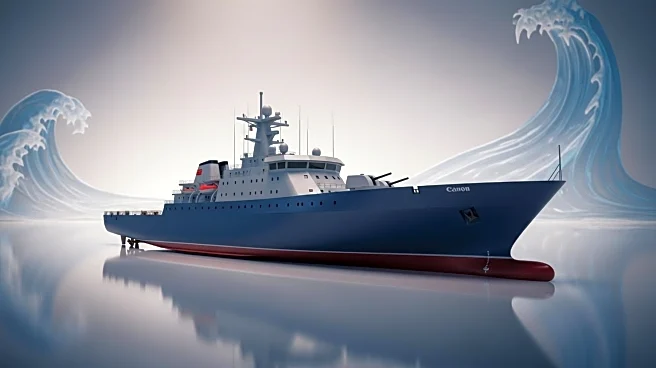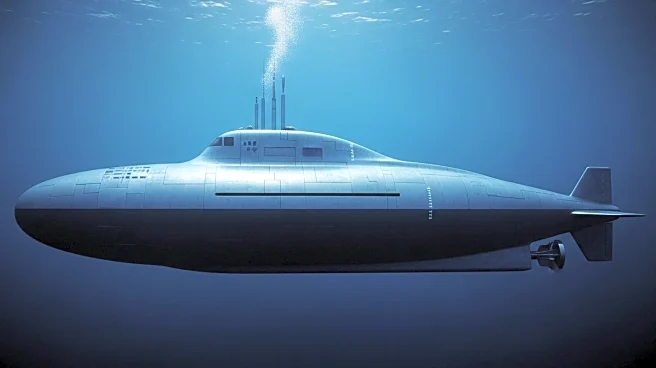What's Happening?
Disney's newest cruise ship, the Disney Adventure, has departed Wismar, Germany, for sea trials. This ship, weighing 206,500 gross tons, is the eleventh largest in the cruise industry and marks Disney as the third cruise line to exceed the 200,000 gross ton mark. The construction of the ship was completed by Meyer Werft after Disney acquired it from the bankruptcy of MV Werften. Originally designed for Genting Hong Kong's Dream Cruises, the ship was intended for the Asian market with accommodations for approximately 9,500 passengers and over 2,000 crew. However, Disney redesigned the ship to fit its brand, reducing passenger capacity to 6,700 and crew to 2,300. The ship will operate short cruises from Singapore starting mid-December.
Why It's Important?
The launch of the Disney Adventure signifies a major expansion for Disney Cruise Line, which is one of the most profitable segments of the Disney corporation. This expansion includes the addition of new ships to both its international and U.S.-based operations. The redesign and completion of the Disney Adventure highlight Disney's strategic move to capture a larger share of the cruise market, particularly in Asia. The ship's departure also marks the end of construction challenges faced due to the bankruptcy of MV Werften, showcasing Disney's resilience and adaptability in overcoming industry hurdles.
What's Next?
Following the sea trials, the Disney Adventure will proceed to Bremerhaven for final fitting out before being handed over to Disney Cruise Line by the end of the month. The ship is scheduled to begin operations from Singapore in mid-December, offering short cruises year-round. Disney's expansion plans include the addition of more ships, with construction underway at Meyer Werft's yard in Papenburg, Germany. This growth strategy is expected to enhance Disney's presence in the global cruise industry, potentially influencing market dynamics and competition.
Beyond the Headlines
The acquisition and redesign of the Disney Adventure reflect broader trends in the cruise industry, where companies are increasingly focusing on brand-specific experiences to attract diverse markets. Disney's ability to transform a ship initially designed for a different market into a vessel that aligns with its brand ethos demonstrates the importance of adaptability and innovation in the industry. This move may set a precedent for other cruise lines facing similar challenges, encouraging them to explore creative solutions to expand their market reach.












